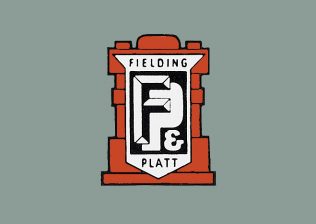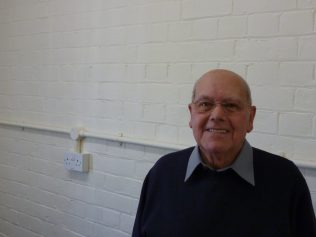Ramsay Harris
Technical College to Fielding & Platt






In these audio clips, Ramsay Harris talks to Ollie Taylor about his career at Fielding & Platt.
This started in 1939 when Ramsay commenced his “apprenticeship” in the Fitting Shop. He worked there with Len Leach for 12 months before moving into the Light Machine Shop. Here he worked with Les Gough on the Marking Off Table for a period of 18 months.
Following this stint on the shop floor, he moved into the Drawing Office. His first task was to complete a tracing using a pen on tracing cloth, before he was allowed to move on to “drawing”. He recalls that the first drawing he did was No. 1516/1/M which was an arrangement of a valve assembly.
His immediate superior in the D.O. was Bill Thomas, the Chief Designer.
Ramsay remembers that there was only ever one female draughtsperson in the office whilst he worked there; however the tracers were all female.
Jack Fielding also worked in the D.O. at this time. He was a very good artist and used to produce his own Christmas cards. Ramsay didn’t receive any cards from Jack, but said his wife Molly did.
F&P was on a 7-day week during the war. The employees did have some time off, maybe 1 Sunday in 3. Ramsay remembers having to go into the air raid shelter on one occasion when Bristol was being bombed and there were fears for Gloucester too. They were there for about an hour and chatted and joked to help pass the time. He thinks they probably had a day off to celebrate the war ending.
After the war, the company was busy working on Extrusion Presses, Scrap Metal Presses and Shears, etc. Ramsay had opportunities to undertaking overseas trips on behalf of the company at this stage in his career and recalls a particularly interesting trip to Seattle.
Finally, it was not all work! Ramsay was a member of the hockey team and shares his sporting memories in clip 5.
If you remember Ramsay, or any of the events he has mentioned, please share your memories by clicking on the words Add a comment about this page below.





Comments about this page
Pleased be advised that Ramsay passed away on 23 January 2023 just 3 days short of his 99th Birthday.
He enjoyed sport all through his life and like any batsman he would have been annoyed as hell that he did not reach 100.
Hi Stuart! Interesting story about your time at Birds. Do you recall the names of any other people on site with you and the amount of time you spent there?
Click on the link to see photos of the site, your description is most accurate! John B
I worked on the 1128 ton Shark shear at the Bynea works of Birds in the terrible winter of 1963. I was still an apprentice working in the Electrical Design Office and was sent to support the installing fitter to sort out any electrical problems. The Shear was controlled by an electrical cabinet which contained about 120 relays. No electronics back then and relays always gave problems from time to time. The Bynea works was an old steel factory but all that was left of it was the roof, no sides. The shear was under the roof but open to all the weather that blew in. It was very very cold. The Bynea works had masses of railway sidings that were full of of old railway carriages and steam locomotives that were being scrapped by British Rail. Gangs removed all the non ferrous metal items from the carriages, they were then set them on fire to burn out, then the remains with the very substantial chassis were cut up by the shear. The steam locos were cut up using oxyacetylene torches by small teams of itinerant Italian workers paid on piece work. Usually 4 to 6 men could cut up a complete engine in a few days. The facilities on site were nothing, no canteen, no toilets or hand washing facilities. We heated a bucket of water on a bonfire for hand washing. We stayed at the Stepney Hotel in Llanelli, which was quite upmarket and the only place you could drink on a Sunday as Wales was still ‘dry’ back then.
Add a comment about this page